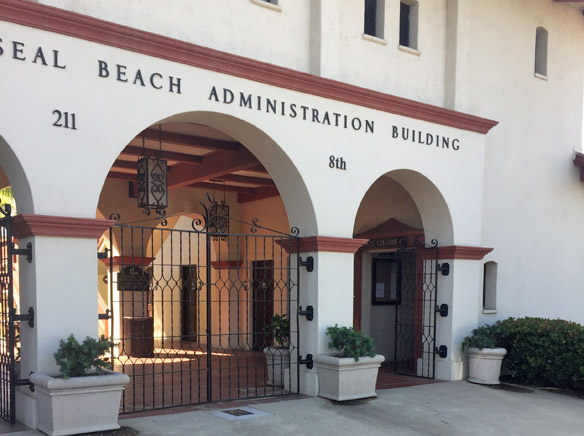The City Council will hold a hearing on water and sewer rates Monday, Feb. 22. Staff proposes increasing the water rates and lowering the sewer rates. According to the city’s consulting firm, the combined water and sewer bill should stay the same or decrease slightly for most single family homes. The water rates would increase annually for the next five years.
If approved, the proposal would also change the way the rates are calculated. Right now, your rates are based on the size of your water meter. If the new rates are approved, the city would base your water and sewer rates on your water usage.
The directors of both the Finance and Public Works departments said last week that Seal Beach’s water fund needs more revenue to pay for improvements to the city’s water system.
All three of the city’s wells need improvements. Two of the wells are near the end of the line.
Town hall
Seal Beach held a virtual town hall on the proposed changes Wednesday, Feb. 10.
Public Works Director Steve Myrter said the city’s last water rate study was conducted 11 years ago. Myrter said the city needs to spend $3.3 million a year on improvements for the next five years, starting this year. He also said the city needed to change water rates to improve equity among the customers.
Myrter said one of the main drivers of the need for increased water rates is the city’s need to fund what he called critical improvements to the city’s water infrastructure.
According to Myrter, three of Seal Beach’s water wells need improvements. Two wells are near the end of their useful “lifespans.” The newest well, built in 2011, has odor issues that keep it from being used at full capacity.
The estimated cost of improving the newest well: $2 million.
The cost of improving the oldest well, built in 1969: $4.7 million.
“Currently, should one of these wells go down, we have no make-up, we have no ability to make up the difference,” Myrter said.
“We would have to go out and purchase that water, which in turn would hit our bottom line very hard,” Myrter said.
Later in the meeting, Finance Director Kelly Telford said without water increases it would be a challenge to fund improvements.
“We just don’t have the revenue,” she said.
According to Myrter, the city’s pipe system is in decent shape, with the exception of the area that runs through the Los Cerritos wetlands. “It has reached the end of its useful life and must be replaced within the next few years,” he said.
Myrter also said the city needs to replace all 5,400 of its water meters. He said the meters were 25 years old and beyond their recommended lifespan.
Estimated cost to replace the meters: $3.2 million.
Steve Gagnon, project manager for Raftelis Financial Consultants, described the financial health of Seal Beach’s water fund and sewer fund. The water fund reserves are running low. The sewer fund has good reserves.
Gagnon said the goal of the proposed water rate changes was for Seal Beach to have enough money to pay operating costs for three months.
First he looked at the water enterprise find. “If the city executes all the projects that it hopes to, then your costs are greater than your revenue,” Gagnon said.
He said if the city doesn’t raise revenues, Seal Beach will have to go into its reserves.
The proposed water rate increase would be 14% in 2021, 12% in 2022, 9% in 2023, 8% in 2024 and 8% again in 2025.
However, a proposed one-time decrease in the sewer rate will apparently offset the water rates. Gagnon said that the sewer fund has good reserves even without a rate change.
The proposed rate changes would have the city use some of those reserves to lower the sewer rate. “The city is buying down its rates with reserves,” Gagnon said.
“This is not a common occurrence,” Gagnon said.
According to Gagnon, city staff wanted to minimize the impact on the bills people in Seal Beach would pay.
Gagnon also explained the other proposed change to the rate system, from meter size to water usage. He described Seal Beach’s sewer rates as complex. He said that currently, Seal Beach takes 22% of your water bill (based on your meter’s size) and adds a sewer charge.
However, Gagnon said that the industry is moving away from charging based on meter size. He said the industry is moving to an estimate of sewer use based on water use.
As for Leisure World, Gagnon said the senior community does not pay for sewer as Leisure World has its own sewer system. That system uses a city pipe that delivers Leisure World sewage to the Orange County system.
If the proposed changes are approved, Seal Beach would charge Leisure World about $1,100 a month. (Gagnon rounded the figure as he spoke.)
“If they don’t pay for that, then somebody else will,” Gagnon said.
He said Leisure World residents would see a sewer bill increase of $2.61 per dwelling per month.
Combined impact on your bill
Gagnon then described the combined impact on the water bills for residents and businesses.
He said single family home customers should see their total bill either stay the same or go down.
Asked why the city wasn’t borrowing money to pay for the water projects, Gagnon indicated that Seal Beach is nearing its debt capacity.












